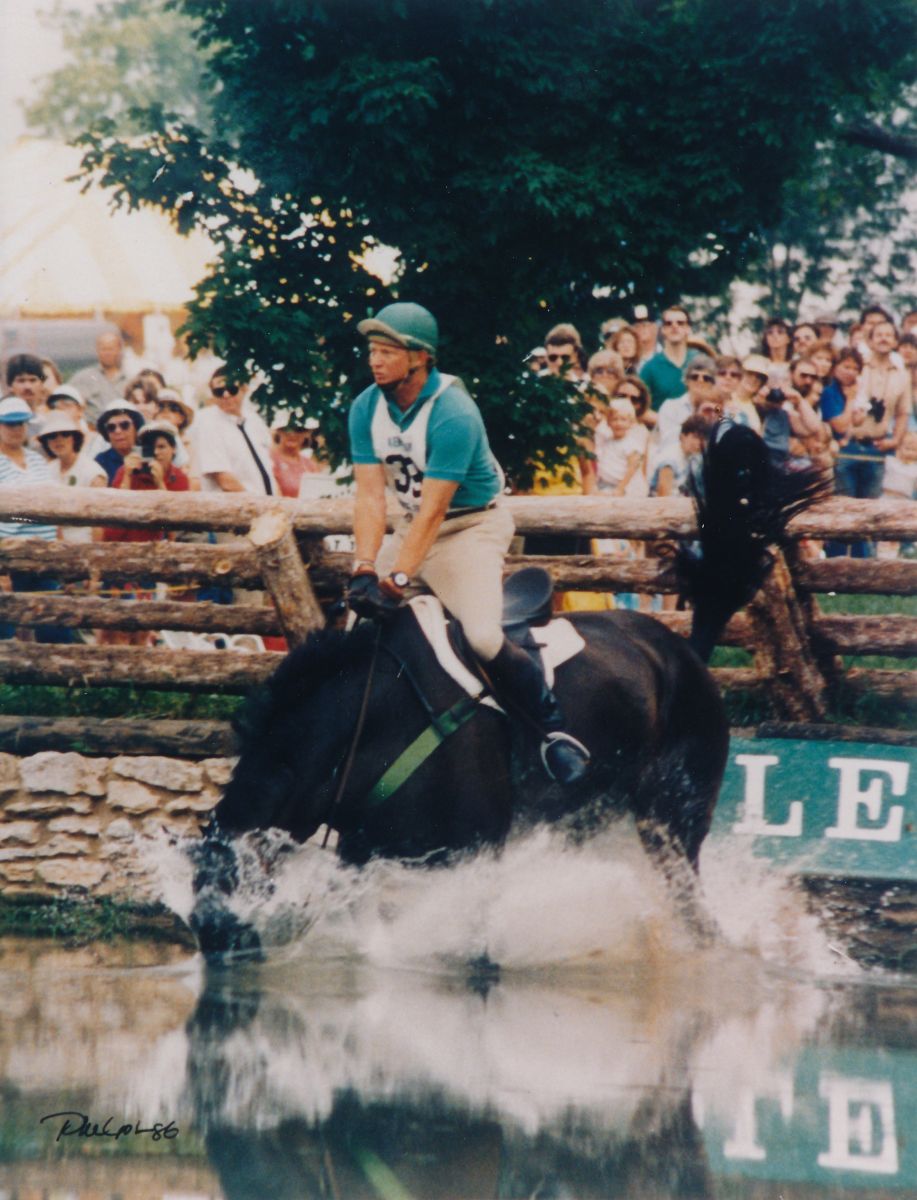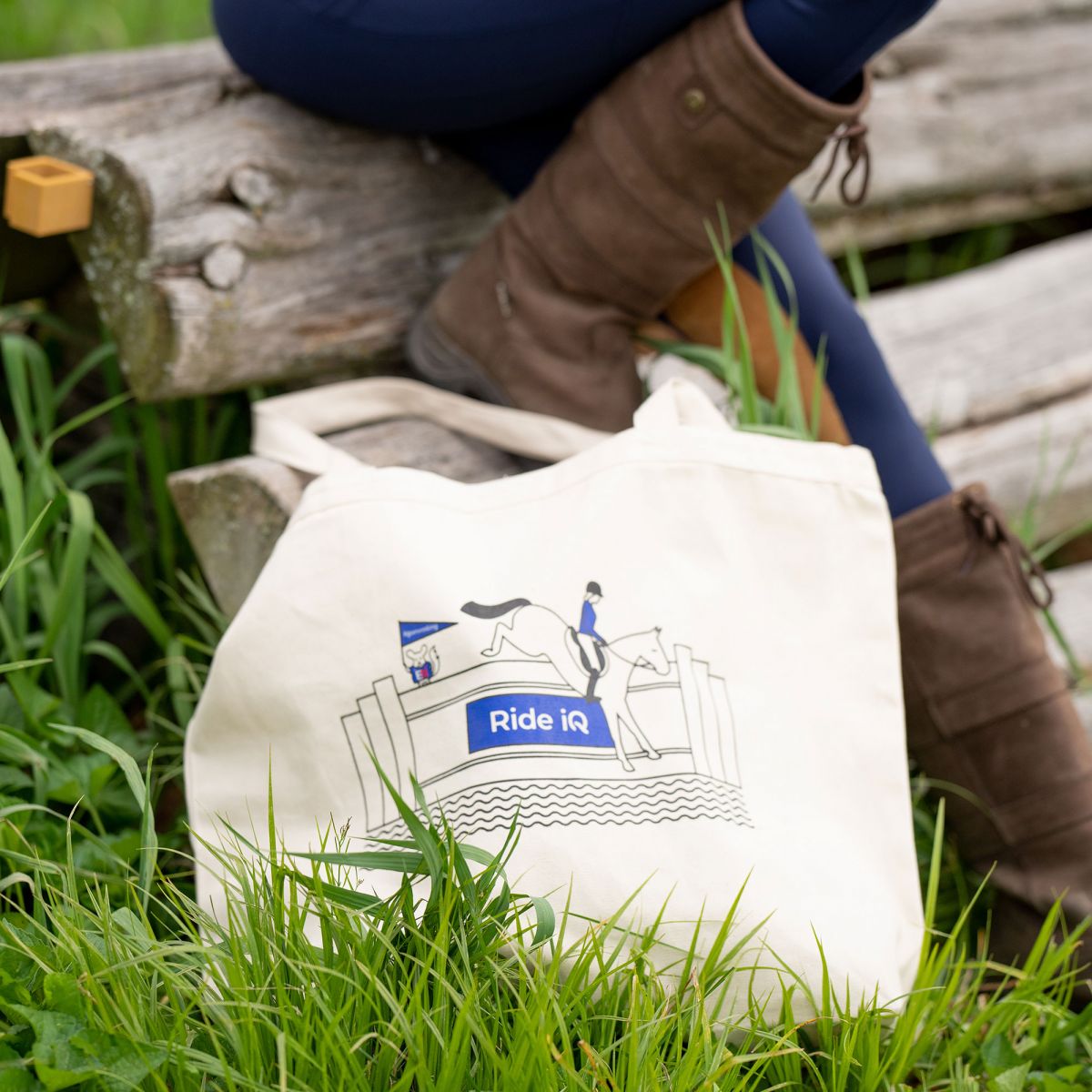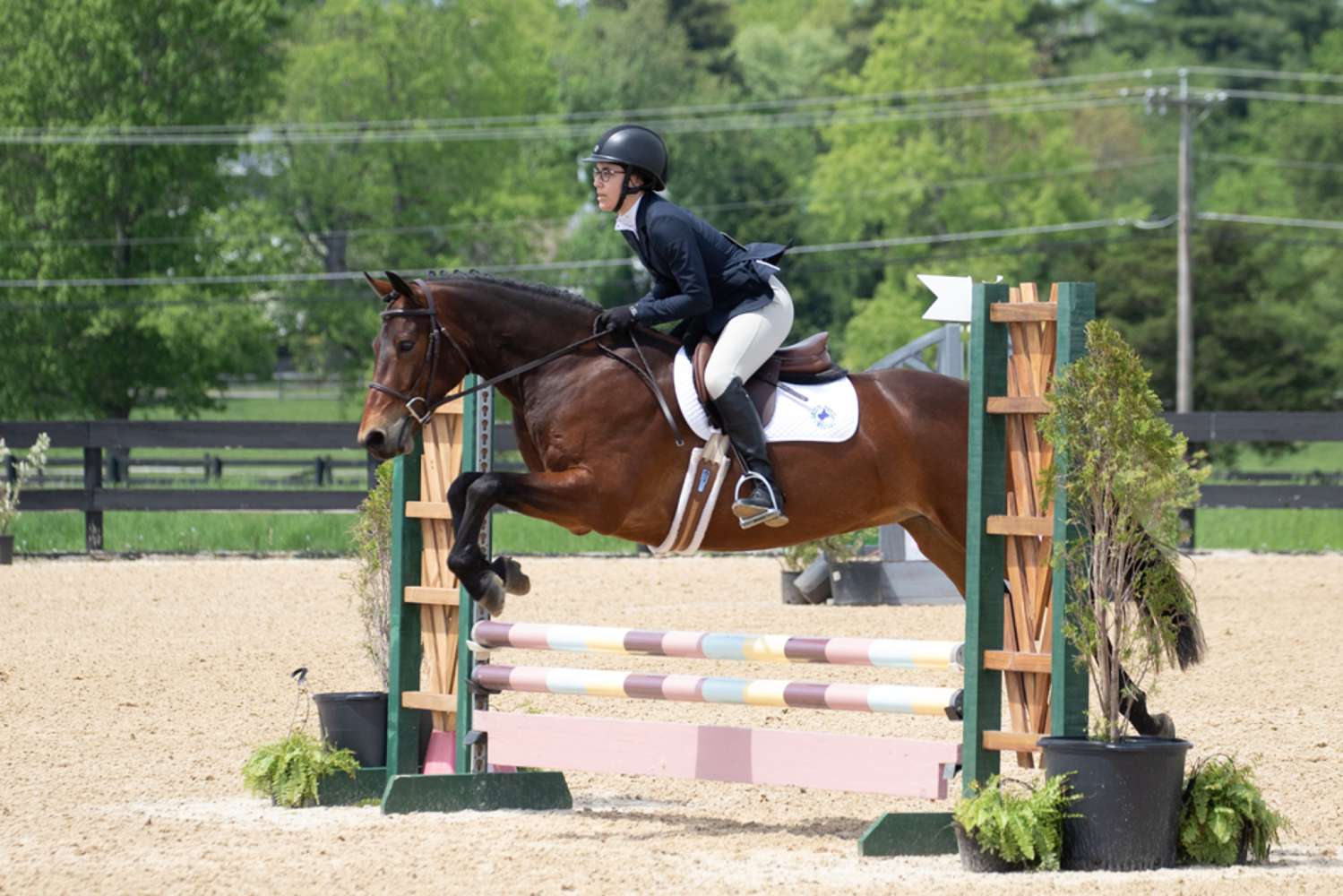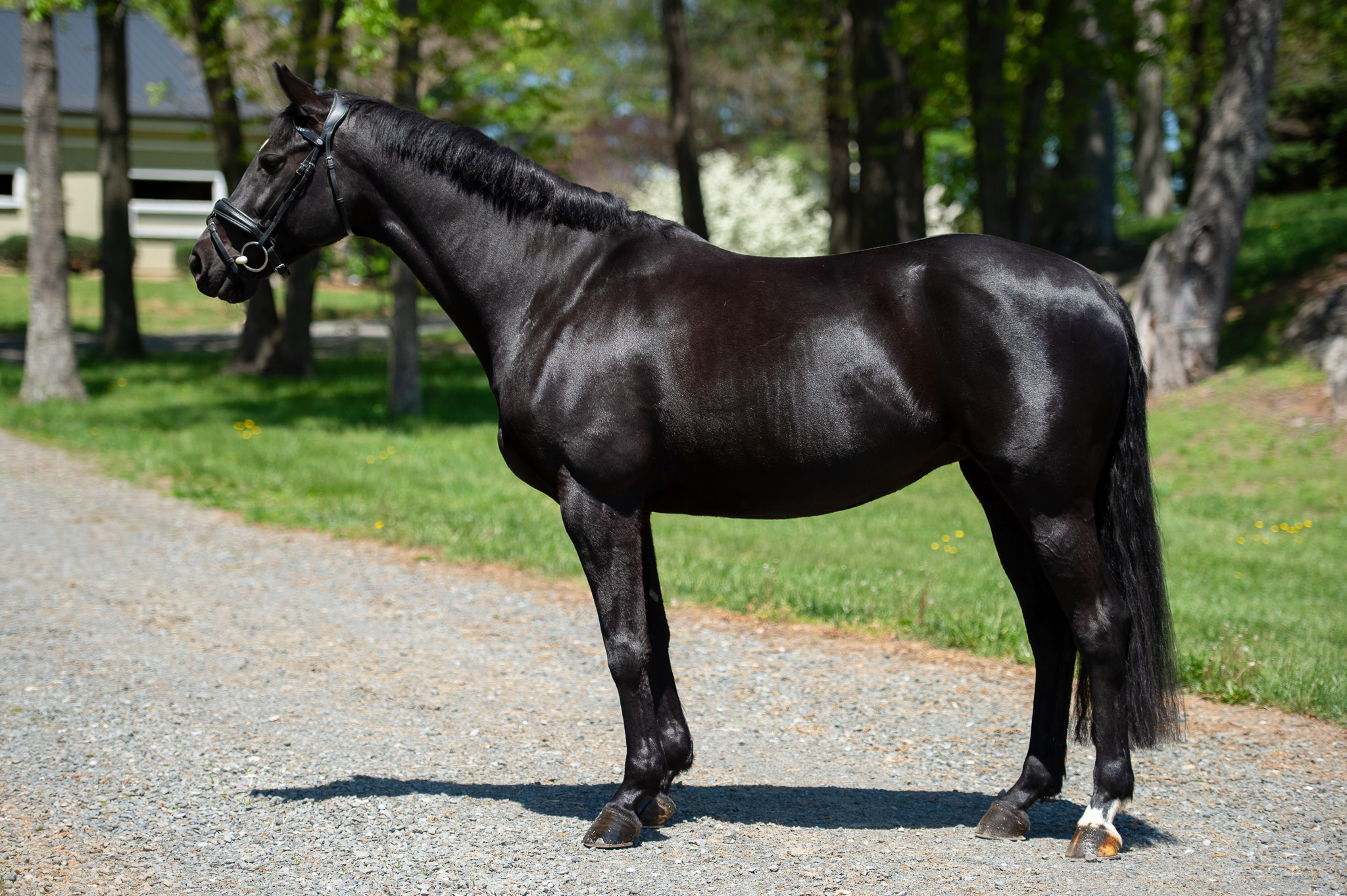
Jim Wofford and Chinch share a moment. Photo via EN’s Instagram.
We’re deeply saddened to share the news that Jimmy Wofford, five-star winner, Olympian, leading equestrian intellect, and consummate horseman, has died at the age of 78 following a two-year battle with pancreatic cancer. His extraordinary, forward-thinking and wide-reaching vision for the sport of eventing has helped to shape it in innumerable ways over the last number of decades, and his passing leaves an enormous void in our industry.

Jim Wofford as a 14-year-old Lance Corporal at the 1959 Round Barn Horse Show in Barrington, Illinois, doing a pretty good imitation of the U.S. Cavalry seat. Photo courtesy of Culver Academies.
The youngest son of an Olympic show jumper and U.S. cavalryman, Jimmy was, perhaps, predestined to be a horseman himself. Certainly, it was a deep-rooted love that coursed through the family, almost all of whom were involved with riding or breeding horses to the uppermost levels. It was Jimmy’s father, Colonel John Wofford, who was one the founding fathers of the U.S. Equestrian Team in its modern iteration, taking equestrian sport from a purely military activity to a civilian one and heralding a new age for the industry. Jimmy’s mother, for her part, was a crucial figure in the founding of the United States Eventing Association (USEA), then the United States Combined Training Association (USCTA), and Jimmy would grow up to be one of its greatest stars.
But before all that, there was a childhood in which horses, dogs, and books became the cornerstones of a vivid world — and one often inhabited by Jimmy alone. His siblings, all much older than him, left when he was young; his father, after achieving so much, succumbed to cancer when his youngest son was just ten; his mother, deeply impacted by the loss, receded into her grief. Jimmy would learn early on to take comfort in the relationships he created with animals, and to find solace in the world of words, both of which would become hugely important parts of his career. At 13, he left home to attend military school, where he spent his free time reading riding handbooks from cover to cover; after that, he pursued further education at the University of Colorado. Soon after, he was named to the U.S. Equestrian Team for the first time, and would remain a part of it — whether as a rider, a coach, or a formative part of the sport itself — for the rest of his life.

Jim Wofford and Kilkenny on their way to clinching team silver and individual sixth place at the 1968 Olympic Games in Mexico. Photo copyright Werner Ernst.
Though the early years as part of the USET training squad were hardly crowned with glory, they allowed Jimmy to receive the formal equestrian education he’d previously only read about, while competing a variety of not-quite-suitable mounts. And then Kilkenny came along.
Kilkenny had already made a name for himself as part of the Irish Olympic team, and he was something of a bargain basement purchase due to his iffy x-rays, but he and Jimmy quickly gelled. Together, they earned a national championship title in 1967, a gold at the Pan-American Games the same year, and team silver in Jimmy’s Olympic debut in 1968 in Mexico City. They repeated the feat in 1972, and picked up an individual bronze medal at the World Championships in 1970, too — though in many ways, all of those early team experiences were educational ones rather than the pinnacle of Jimmy’s achievements.

James Wofford on Carawich, 1978. Photo courtesy of Gamecock Photo.
Kilkenny’s career as an upper-level event horse wound down to a close shortly thereafter, but Jimmy wouldn’t be off the Olympic radar for long: in 1977, he joined forces with the great Carawich, who he rode at the famously tough 1978 World Championships at Lexington, helping the U.S. team to bronze. In 1980, the pair were named for the Olympics following a spectacular fifth-place finish at Badminton in 1979, but the US’s boycott of those Moscow Games meant that they rerouted to the ‘alternate Games’ instead at Fontainebleau, France, where they won individual silver, finishing second to Denmark’s Nils Haagensen. In 1981, they won the Kentucky Three-Day Event, closing the book on Carawich’s exceptional career.

Jim Wofford competing with The Optimist at Kentucky in 1986.
The retirement of Carawich, who had sustained an injury at Luhmühlen months after his Kentucky win, looked set to be the close of Jimmy’s own competitive career, too — but although he made every effort to step away from the sport and into ‘normality’, working as an insurance salesman and enjoying time spent just being a dad, when he was offered a catch ride on Karen O’Connor’s (then Lende’s) The Optimist for the 1986 Kentucky Three-Day Event, he couldn’t pass up the chance. The decision was a wise one: the pair won in fine style, despite their short partnership.
Later that decade, Jimmy would put his extraordinary experience and intellect to work at an even higher level: in 1988, after serving as Vice President for the American Horse Show Association, he became its President — a role he would hold until 1991. He also served on boards across the sport, including the USCTA and USET, did two years as part of the FEI’s eventing committee and was part of the US Olympic Committee as its first-ever equestrian representative. His influence went further than just the US, too: he was the chef d’equipe for the Canadian eventing team from 2001 to 2004, and has been a mentor and coach to many of the biggest names in eventing throughout his life, including David O’Connor, Bea and Derek diGrazia, and Wash Bishop.
“At least one rider on every U.S. Olympic, World Championship, and Pan American team since 1978 has been a graduate of Jim’s program,” reads his Hall of Fame biography, and when you begin to break down those lists, it’s truly remarkable: his students included Kim Severson and John Williams, who won team bronze — and Kim won individual silver — at Athens in 2004; in 2000, at the Sydney Olympics, every single member of the bronze medal winning team, including individual gold medallist David O’Connor, had trained with him.
Even those who couldn’t ride and train with him in person were able to benefit from his academic, theoretical view of the sport – and that was an enormous encouragement to riders who, like Jimmy, didn’t grow up surrounded by trainers in the confines of a school. His belief that talent could be learn through reading and applying that knowledge was a breath of fresh air, and there are few eventing enthusiasts in the U.S. — or beyond — who won’t have picked up a copy of his venerated book, Training the Three-Day Event Horse and Rider. He was also a popular columnist for The Chronicle of the Horse and was inducted into the USEA Hall of Fame in 2010.
Jimmy is survived by his wife, Gail, daughters Jennifer and Hillary, grandsons James, Hudson, Lewis, and Theodore, and countless supporters, students, friends and colleagues across the breadth and depth of the equestrian industry, all of whom will be feeling keenly the absence of one of eventing’s true greats. Our thoughts are with you all.











































